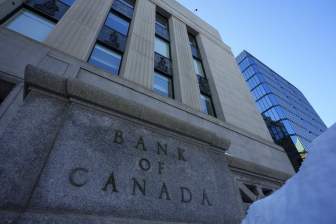“The saddest part of #Trudeaublackface #brownfacetrudeau,” wrote a racialized friend of mine on Facebook, “is having to educate black and brown people on why it’s offensive and racist.”

The pictures and video of Liberal Leader Justin Trudeau in racist makeup have led to some difficult conversations between minority communities and the broader society — and within racialized communities themselves.
After all, visible communities are not a monolith. Varied reactions among racialized communities, similar to the range of reactions among the wider public, demonstrate why we can’t ever assume that anyone is automatically aware of social injustices faced by other people of colour.
READ MORE: Debate on racism in Canada must go beyond Trudeau photos, advocates urge
Who should carry the burden of education? How do we better understand how various forms of racism and discrimination can impact different communities in a myriad of ways?
Unfortunately, we haven’t been able to rely on our schools to do this work, though there have been efforts to tackle issues around equity and inclusion in various school boards across the country.
Such commitments are often impacted by government priorities, or the lack thereof.
Take the Conservative government in Ontario. This past summer, it scrapped a rewrite of curricula to include more information about residential schools. The government there has also made numerous cuts to anti-racism initiatives.
We also haven’t been able to rely much on media institutions to educate Canadians about systemic discrimination and racism. The reality is that our media organizations are too often unrepresentative of Canada’s diversity, as many have noted in the wake of the blackface/brownface scandal.

Get daily National news
That often leaves the task of education on the shoulders of racialized advocates themselves. While it is a heavy burden, organizing within communities has proven to be an effective means of affecting change.
WATCH BELOW: Terry Teegee, Savannah Sutherland and Sydney Henry on the fallout of the Trudeau blackface controversy

A 2007 study of ethnocultural communities by Elections Canada found evidence that supportive community associations and organizations help lead to greater participation of visible minority communities in local and national politics.
By building grassroots engagement and education programs, not only will more people become involved, they’ll also have better opportunities to engage on a variety of human rights and social issues.
Take the community-specific GOTV campaigns among Canadian Muslims in the last election. Voter turnout broke records. This points to the value of communities self-organizing. We see similar efforts among a variety of other communities, including Operation Black Vote.
These initiatives are invaluable, yet many grassroots efforts struggle to secure necessary funds and resources to have a sustained, long-term impact. This means the public needs to require that all levels of government bolster and support anti-racism initiatives, civic engagement and educational programs within communities.
To date, only the NDP’s platform includes details on its anti-racism initiatives. Conservative Leader Andrew Scheer did say this week that he would back the Liberal anti-racism strategy which was unveiled last June. Whoever forms government would be wise to adopt it. The $45-million strategy specifically identifies the need to build capacity among communities themselves.
Why is any of this necessary? Because any form of systemic racism that prevents some people from fully participating in society undermines our country’s overall progress.
READ MORE: Racism can become a political flashpoint — advocates say it needs to be a conversation
“If some groups have all the entitlements and privileges and others have none or only some of them, then the ideals of citizenship are thwarted,” opined Cecil Foster in the foreword of Anthony Stewart’s book, You must be a basketball player: Rethinking Integration in the University.
“Some groups are more fully citizens, and presumably more fully human in a Canadian way, than those without.”
There are many occasions when communities are compelled to reclaim their humanity in the public sphere. The opposition to Quebec’s laws against religious clothing is a current example of citizens calling on the state for fair treatment.
WATCH BELOW: Justin Trudeau first interview since blackface scandal
Allies are those who are not directly impacted, but who take the time to understand the discrimination at play, unpack relevant history, and join affected communities to counter the injustice.
“A history that goes unacknowledged is too often a history that is doomed to be repeated,” wrote Robyn Maynard in Policing Black Lives: State Violence in Canada from Slavery to the Present. Maynard points to how advocating for Indigneous rights is intertwined with standing up to anti-Black racism, for instance.
Indeed, empathy is powerful. A recent poll found support for improving the lives of Indigenous people is nearly double among visible minority communities than the rest of the population.
Educating all communities about systemic barriers is a necessary step towards eventually dismantling them — once and for all.
Amira Elghawaby is a writer and human rights advocate. Follow her on Twitter @AmiraElghawaby







Comments